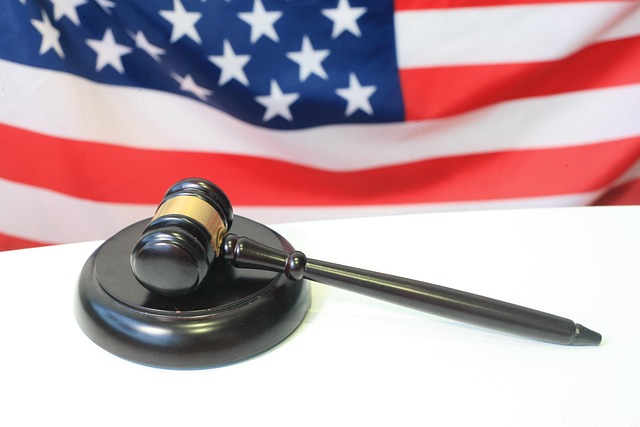Personal injury claims require meticulous documentation of harm, liability proof, and timely action within strict deadlines. Common mistakes include delays, inadequate medical records, and misunderstanding corporate defenses. In criminal law, effective case preparation, evidence preservation, and clear presentations are vital for convictions, but challenges like tight deadlines and intricate matters can hinder success. Meticulous documentation, prompt medical attention, and cautious communication are crucial to avoid pitfalls in both criminal and personal injury cases, ensuring better outcomes especially in complex scenarios like white-collar crimes.
“In the realm of criminal law enforcement, understanding personal injury claims is paramount. This article navigates the intricate details and common pitfalls associated with these cases, offering a comprehensive guide for individuals seeking justice. We explore key elements and timelines, essential for accurate documentation and effective presentation. Furthermore, it delves into the legal rights and responsibilities of all involved parties. By highlighting potential mistakes in personal injury claims, we empower readers to foster better communication strategies with law enforcement officers.”
- Understanding Personal Injury Claims: Key Elements and Timelines
- Common Pitfalls in Documenting and Presenting Cases
- Legal Rights and Responsibilities of Individuals Involved
- Strategies for Effective Communication with Law Enforcement Officers
Understanding Personal Injury Claims: Key Elements and Timelines

Personal injury claims can be complex, often involving intricate details and specific timelines. When navigating these cases, it’s crucial to understand the key elements that constitute a strong claim. The first step is to identify the harm caused by the negligent actions of another party, whether it involves physical injuries or emotional distress. In personal injury law, establishing liability is paramount; plaintiffs must prove that the defendant owed them a duty of care, breached that duty, and their actions directly led to the injuries sustained.
Avoiding common mistakes is essential for successful claims. Many individuals make the mistake of delaying in seeking legal counsel, which can impact timelines and evidence gathering. Additionally, failing to document medical treatments and expenses meticulously can hinder compensation efforts. In cases involving corporate or white-collar defenses, understanding the respective business operations and potential risks is vital. Different types of personal injury claims, such as slip-and-fall incidents or auto accidents, have distinct deadlines for filing, so awareness of these timelines is critical to ensuring a case moves forward effectively.
Common Pitfalls in Documenting and Presenting Cases

Documenting and presenting cases effectively is paramount in criminal law enforcement to secure convictions and just outcomes. However, numerous pitfalls can trap well-intentioned practitioners, especially in complex matters involving white collar and economic crimes. Common mistakes include insufficient case preparation, failure to preserve evidence, and lack of clarity in presentations. Many times, these oversights stem from the pressure to meet tight deadlines or navigate intricate legal landscapes.
For personal injury claims, documenting injuries accurately, gathering reliable witness statements, and presenting compelling evidence are crucial. An unprecedented track record of success often hinges on meticulous attention to detail during these initial stages. Whether dealing with corporate or individual clients, ensuring every aspect is well-documented can significantly impact the outcome. This process becomes even more critical when tackling sophisticated cases that demand a deep understanding of both criminal and civil law, thereby avoiding common pitfalls and achieving favorable results.
Legal Rights and Responsibilities of Individuals Involved

When individuals become entangled in criminal law enforcement proceedings, understanding their legal rights and responsibilities is paramount. Every citizen has certain protections guaranteed by law, such as the right to remain silent and the right to an attorney during questioning. However, many people make common mistakes in personal injury claims that can weaken their case or even lead to adverse outcomes. One significant blunder is failing to seek medical attention promptly after an accident; this can impact insurance claims and damage credibility. Additionally, not documenting evidence and injuries adequately can hinder the ability to prove damages during civil proceedings or jury trials across the country.
Another area of concern involves sharing too much information with investigators or insurance companies. Statements made in good faith may be used against individuals later on, especially in complex cases like white-collar and economic crimes. It’s crucial to exercise caution when discussing details that could shape the narrative of their case. Recognizing these potential pitfalls is essential for ensuring fair outcomes, whether facing criminal charges or pursuing personal injury claims, and can help individuals navigate the legal system more effectively across the country.
Strategies for Effective Communication with Law Enforcement Officers

Effective communication with law enforcement officers is a crucial aspect of navigating criminal law enforcement procedures. Many individuals, especially those involved in personal injury claims, often make common mistakes that can hinder their case. One of the primary blunders is failing to provide clear and concise information during interactions with police. Officers are trained to gather facts, so offering vague or contradictory statements may raise suspicions. It’s essential to remember that every interaction is a potential opportunity to build trust and ensure your rights are protected.
To avoid common pitfalls in personal injury claims, individuals should focus on maintaining open lines of communication throughout the investigative and enforcement process. This involves actively listening to officers’ questions, providing detailed yet accurate accounts of events, and remaining calm and respectful. By doing so, you contribute to a smoother investigation, potentially achieving extraordinary results in your case. Additionally, seeking guidance from a general criminal defense attorney can offer valuable insights tailored to all stages of the legal process.
In navigating Criminal Law Enforcement, understanding personal injury claims, avoiding common mistakes, and mastering communication with law enforcement officers are essential components for a just and effective legal process. By recognizing the key elements and timelines involved, being mindful of documentation pitfalls, and appreciating individual rights and responsibilities, those affected by criminal incidents can navigate the system more confidently. Effective communication strategies with law enforcement officers foster clarity, ensuring everyone’s voices are heard and justice is served.






